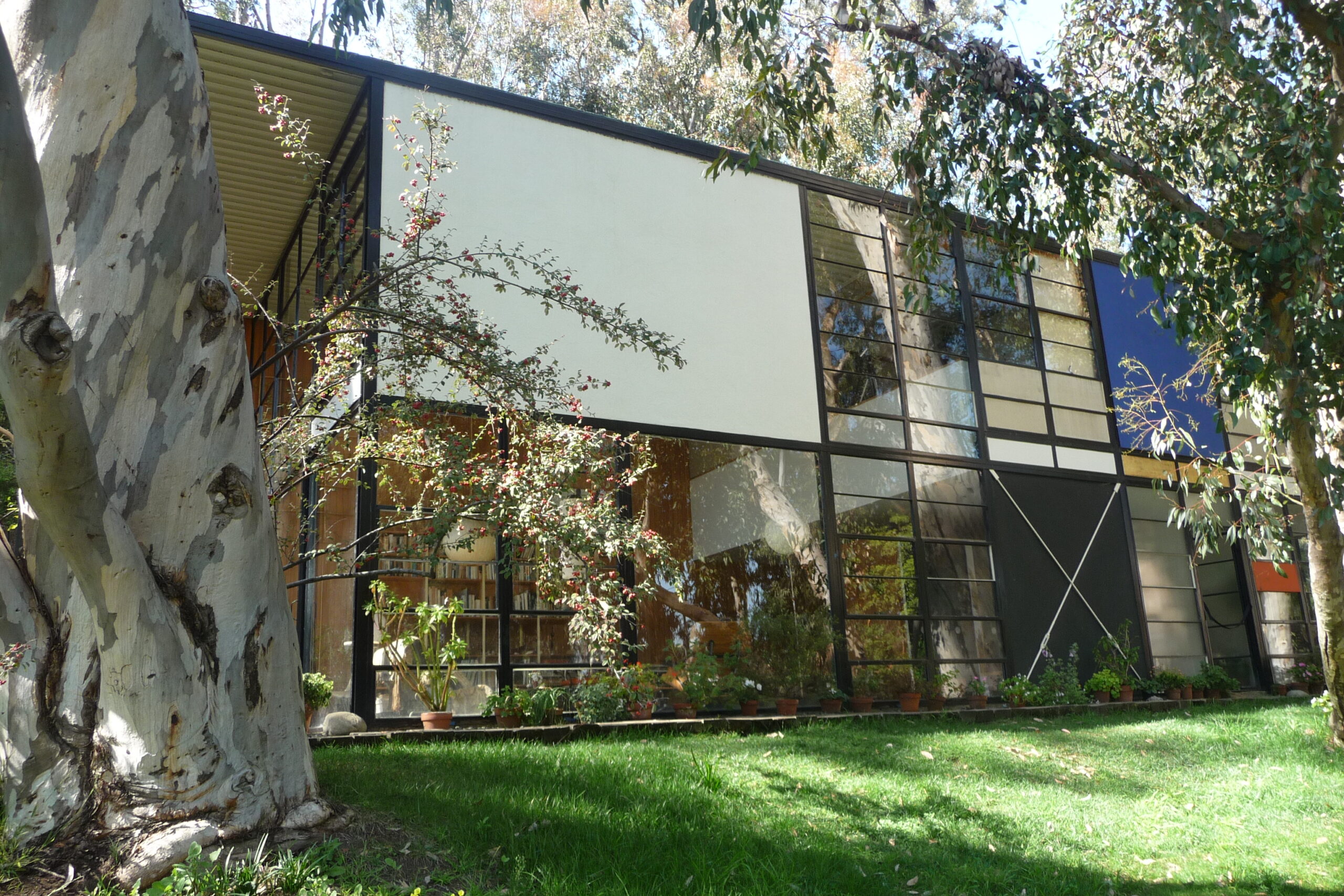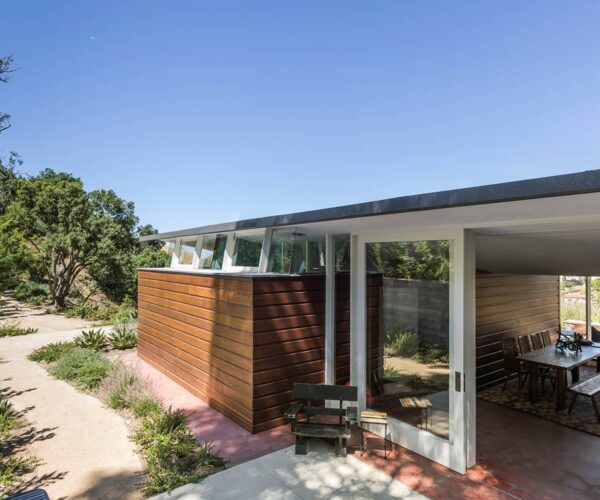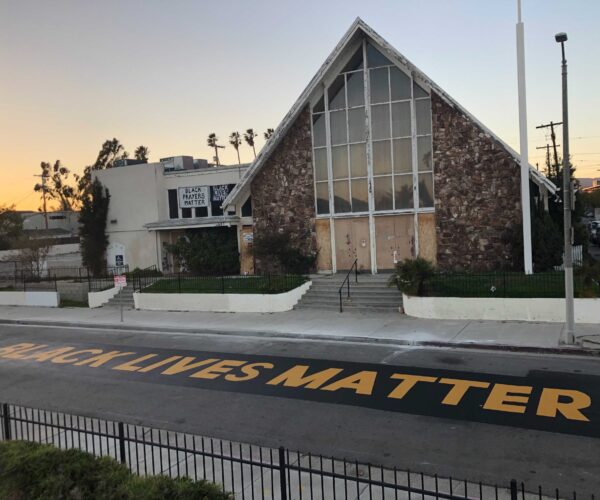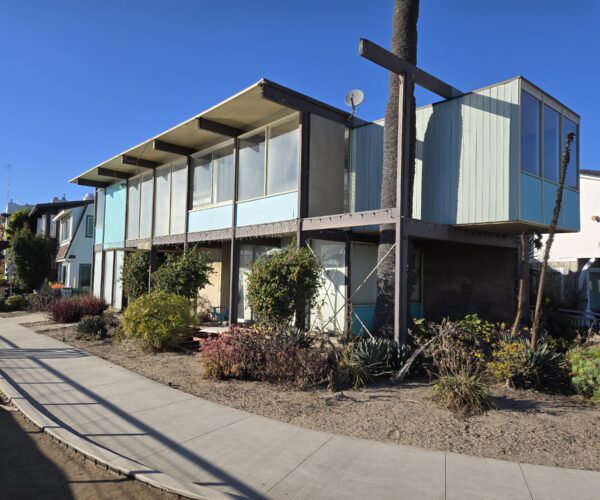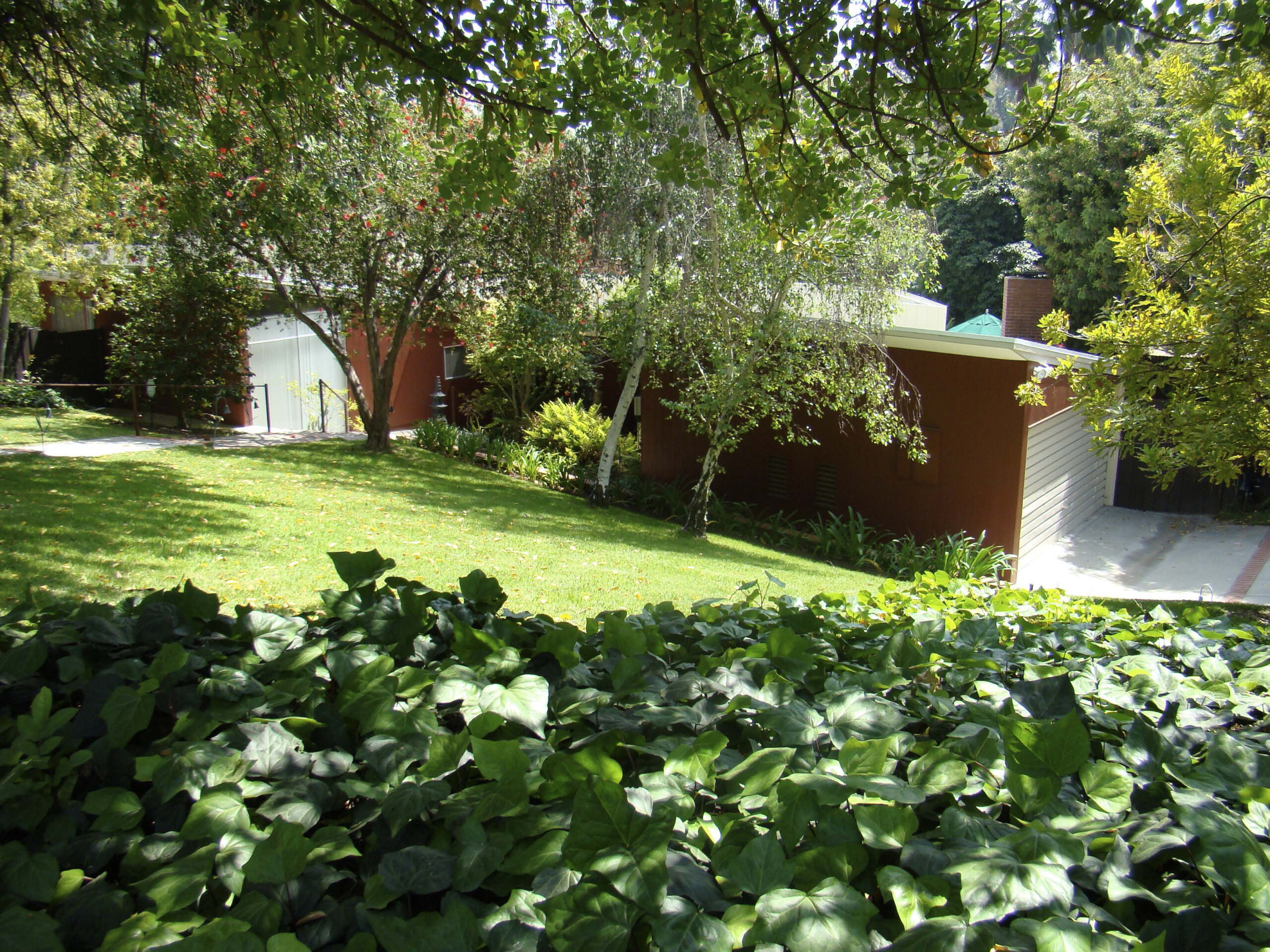
Place
Case Study House #10
Case Study House #10 exemplified the Case Study House program goals through the use of new building materials and techniques, affordability for the average American, simplicity of construction, economy of materials, and integration of indoor and outdoor living.


Place Details
Address
Get directions
Architects
Year
Style
Decade
Property Type
City
Case Study House #10 was not originally commissioned as part of Arts & Architecture magazine’s Case Study House program, but was added upon completion in 1947 to maintain continuity in the program given the number of unbuilt houses up to that point. The house exemplified a number of the program’s goals, including the use of new building materials and techniques, affordability for the average American, simplicity of construction, economy of materials, and integration of indoor and outdoor living.
Designed by the father and son team of architects, Kemper Nomland and Kemper Nomland, Jr., the house was built on a sloping corner lot in Pasadena. The downward slope of the lot served as inspiration for the house’s three-level plan.
The house is primarily of wood post and beam construction, set upon a single concrete slab, and features extensive use of large walls of glass.
The house’s shed roof parallels the slope of the lot. At the front of the house, steps and a walk lead down from the street to the main entrance, where a floor-to-ceiling pebbled glass wall in the studio overlooks the walkway. The rear elevation of the house is formed mainly of sliding glass doors, with the roof overhang providing shade to a back patio outside of the dining room.
The top floor, at street level, contains a studio and garage. The master bedroom and a guest room and bath are on the middle floor, which also contains a gallery/hallway that overlooks the living room below through a large pane of corrugated translucent glass. The living room, dining room, kitchen, and a 1968 addition (by Kemper Nomland, Jr.) are on the lower level.
The Conservancy does not own or operate the Case Study House #10. For any requests, please contact the Case Study House #10 directly.
